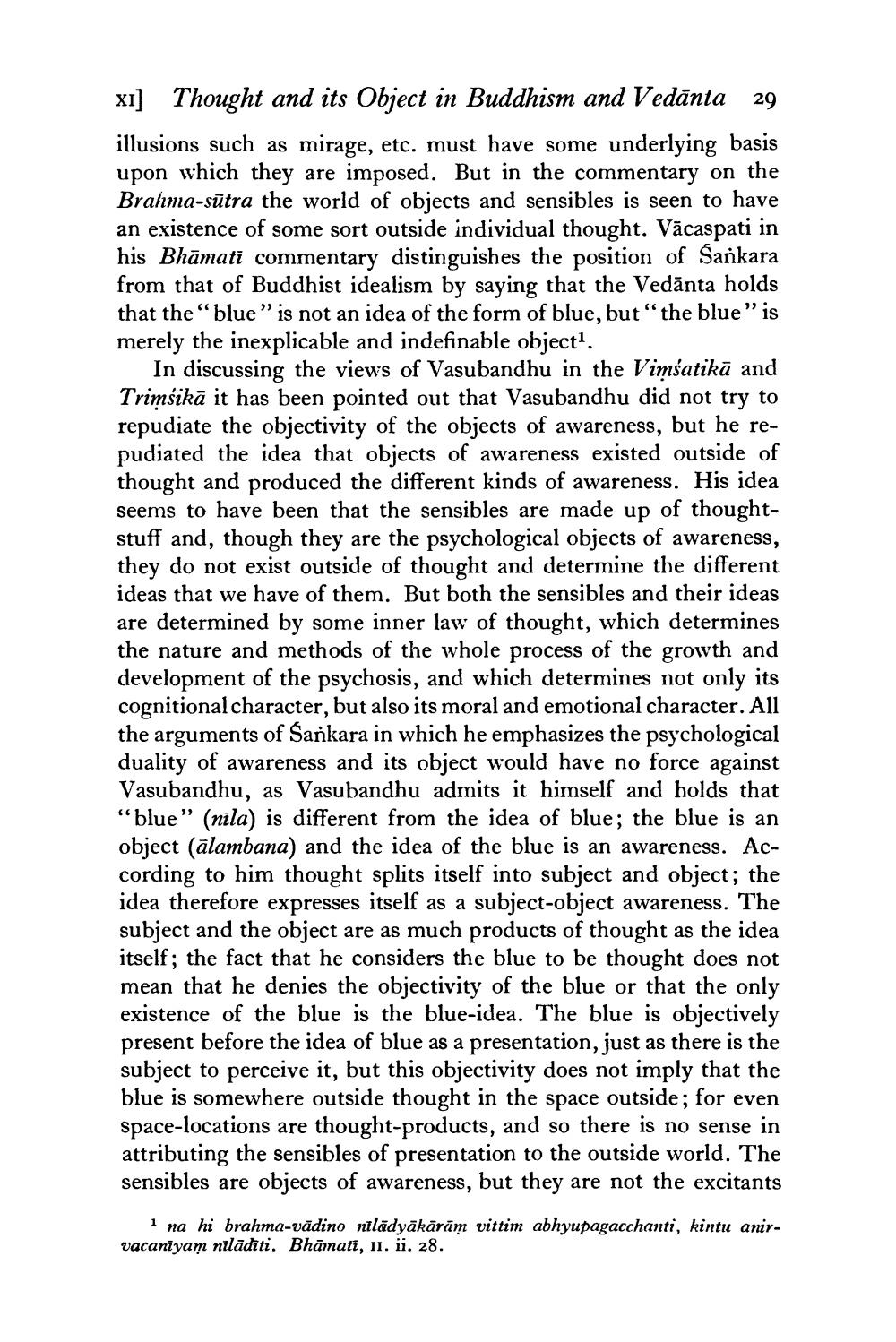________________
XI] Thought and its Object in Buddhism and Vedānta 29 illusions such as mirage, etc. must have some underlying basis upon which they are imposed. But in the commentary on the Brahma-sūtra the world of objects and sensibles is seen to have an existence of some sort outside individual thought. Vācaspati in his Bhāmati commentary distinguishes the position of Sankara from that of Buddhist idealism by saying that the Vedānta holds that the "blue" is not an idea of the form of blue, but“ the blue” is merely the inexplicable and indefinable object?.
In discussing the views of Vasubandhu in the Vimsatikā and Trimśikā it has been pointed out that Vasubandhu did not try to repudiate the objectivity of the objects of awareness, but he repudiated the idea that objects of awareness existed outside of thought and produced the different kinds of awareness. His idea seems to have been that the sensibles are made up of thoughtstuff and, though they are the psychological objects of awareness, they do not exist outside of thought and determine the different ideas that we have of them. But both the sensibles and their ideas are determined by some inner law of thought, which determines the nature and methods of the whole process of the growth and development of the psychosis, and which determines not only its cognitional character, but also its moral and emotional character. All the arguments of Sankara in which he emphasizes the psychological duality of awareness and its object would have no force against Vasubandhu, as Vasubandhu admits it himself and holds that “blue” (nila) is different from the idea of blue; the blue is an object (ālambana) and the idea of the blue is an awareness. According to him thought splits itself into subject and object; the idea therefore expresses itself as a subject-object awareness. The subject and the object are as much products of thought as the idea itself; the fact that he considers the blue to be thought does not mean that he denies the objectivity of the blue or that the only existence of the blue is the blue-idea. The blue is objectively present before the idea of blue as a presentation, just as there is the subject to perceive it, but this objectivity does not imply that the blue is somewhere outside thought in the space outside; for even space-locations are thought-products, and so there is no sense in attributing the sensibles of presentation to the outside world. The sensibles are objects of awareness, but they are not the excitants
1 na hi brahma-vādino niladyākārām vittim abhyupagacchanti, kintu anirvacanīyam nilādīti. Bhāmati, 11. ii. 28.




